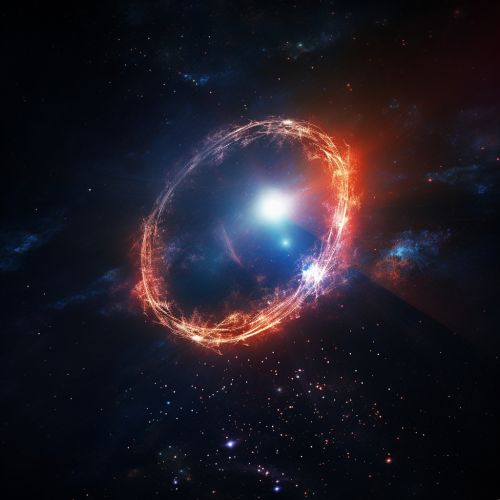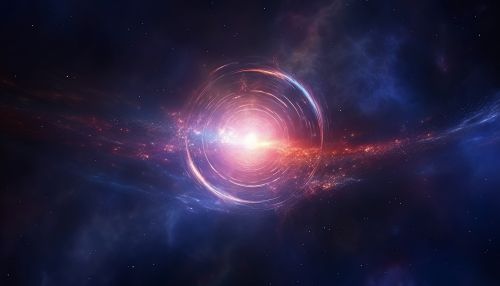Gravitational Lensing in Cosmology
Introduction
Gravitational lensing is a phenomenon in cosmology that is directly related to Einstein's General Theory of Relativity. This theory, published in 1915, describes gravity as a curvature of spacetime caused by mass and energy. Gravitational lensing is a manifestation of this theory, where light from a distant source is deflected as it passes a massive object, causing the light to follow a curved path. This results in an observer seeing the source in a different position than where it actually is.


Theory
The theory of gravitational lensing is based on the principle that light follows the curvature of spacetime. This is a direct consequence of Einstein's General Theory of Relativity, which states that mass and energy cause spacetime to curve. When light from a distant source passes a massive object, it follows this curve, resulting in the light being deflected.
The amount of deflection depends on the mass of the object and the distance of the light source from the object. The greater the mass of the object, the greater the deflection. Similarly, the closer the light source is to the object, the greater the deflection.
Types of Gravitational Lensing
There are three main types of gravitational lensing: strong lensing, weak lensing, and microlensing.
Strong Lensing
Strong lensing occurs when the light from a distant source is significantly deflected, resulting in multiple images of the source. These images can appear as arcs or rings around the lensing object, a phenomenon known as an Einstein Ring.
Weak Lensing
Weak lensing is a more subtle effect, where the deflection of light is not significant enough to produce multiple images. Instead, the images of distant sources are slightly distorted, appearing as if they have been stretched along an axis. This effect is usually only detectable statistically, by observing the shapes of many distant galaxies.
Microlensing
Microlensing is a special case of gravitational lensing, where the lensing object is not massive enough to cause significant deflection. Instead, the light from the source is slightly magnified, resulting in a temporary increase in brightness. This effect is often used to detect exoplanets and dark matter.
Applications in Cosmology
Gravitational lensing has a number of applications in cosmology. It can be used to measure the mass of galaxies and clusters of galaxies, to detect dark matter, and to study the early universe.
Measuring Mass
By observing the deflection of light, astronomers can measure the mass of the lensing object. This is particularly useful for studying galaxies and clusters of galaxies, which are often too distant to measure directly.
Detecting Dark Matter
Gravitational lensing is also a powerful tool for detecting dark matter. Dark matter does not emit or absorb light, making it invisible to traditional telescopes. However, it does have mass, and therefore can cause gravitational lensing. By observing the deflection of light, astronomers can map the distribution of dark matter in the universe.
Studying the Early Universe
Finally, gravitational lensing can be used to study the early universe. Light from distant galaxies has taken billions of years to reach us, so we are seeing these galaxies as they were in the early universe. By studying the deflection of this light, astronomers can learn about the conditions of the early universe.
